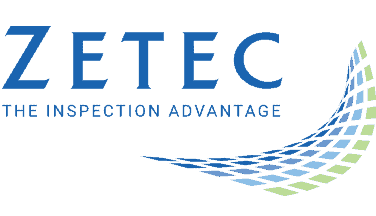How to Meet UT Standards for Casting

Cast steel in various forms is used widely in many critical global industries. In the nuclear power industry, for example, cast austenitic stainless steel forms pipes and elbows, pump casings, and pressurizer safe-ends in reactor cooling systems. In oil and gas, cast steel can be used for platform risers, drilling pipes, or large forgings. In these and other instances, the integrity of the casting is essential for safety and requires nondestructive testing (NDT).
Industries commonly use ultrasonic testing (UT) to assess cast steel prior to and during service. Inspectors seek to identify excess voids, foreign materials inclusion, and shrinkage, any of which can lead to asset failure down the line. These defects may be present in any steel casting; testing seeks to determine their extent and degree.
In order to meet any published NDT standard, technicians must know which standards are applicable, observe proper testing procedures, and use reliable, effective inspection equipment.
Relevant Standards for Casting Using UT
In some countries, testing standards for casting are codified by law. In most cases, however, while regulations require testing, the specific soundness standards and testing methods required are delegated to expert bodies. To demonstrate compliance is to be able to prove that testing has been performed according to the standards prescribed by these bodies.
Several different bodies may provide the most relevant standards for casting, depending on the industry, use case, and alloy. Cast steel alloys can differ from wrought alloys, and the inclusion of different metals will affect their internal properties. After identifying the alloy being scanned, you could consult with one of the following organizations for standards and recommended approaches:
- ASTM International
- American Society for Nondestructive Testing (ASNT)
- American Society of Mechanical Engineers (ASME)
- American Petroleum Institute (API)
Companies with experience producing steel castings are likely to have procedures already in place for test methods and acceptability requirements. Often, but not always, these procedures are based on the standards published by one or more of the above institutions. Standards that are too stringent can cause economic losses, but those that are too lenient can cause failure in situ—which can lead to significant economic losses. If internal standards differ from expert guidelines, they should do so on the strength of rigorous data collection and analysis.
To find relevant standards, first consult internal company publications or Level III NDT experts employed by your company. If no guidance is available internally, purchase and study the standards pertaining to your specific application from one of the above expert bodies.
Performing UT Inspections of Casting to Meet Standards
Once relevant standards have been procured and studied, you’ll discover in many cases, ultrasonic testing is the choice of the standard due to performance capabilities and accuracy of the technology. Performing UT inspections can proceed under the supervision of a Level II or III NDT technician. Probe choice should reflect the determined granularity of the casting to be examined, typically employing probes with frequencies between 1 and 5 MHz.
These frequencies optimize against the scattering effect encountered and noise created by the coarse internal grains of castings, as well as the rough surfaces present in sand castings. Further specificity can be attained by testing probes and equipment calibration against representative samples, with defects detected by other means, such as radiography. Probe angles and scanner use depend on the geometry of the casting being scanned.
In addition to equipment hardware setup, software should be configured to save and store scan analysis. This provides a way to compare the results of scans over time. It also allows companies to prove regulatory compliance by displaying archived scans. These archives can be analyzed as well to improve future scanning standards.
Meeting standards for casting comes down to knowing which alloy is being tested and what the standards are, then following proper testing procedure using effective, capable equipment.
Zetec provides top-shelf ultrasonic testing equipment that can meet the most stringent UT standards for casting. Our experts can walk you through probe selection or provide product training. To learn more, contact us today!
